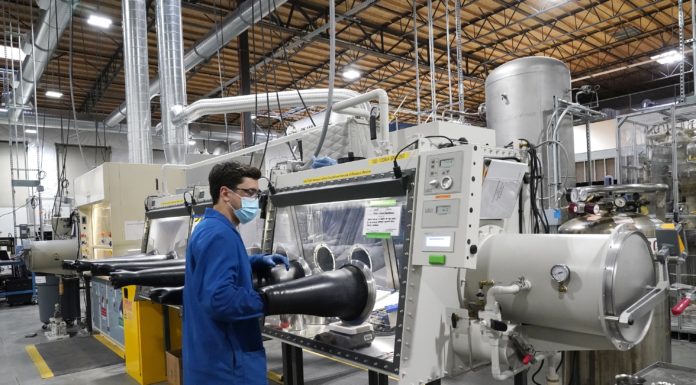(Tom Gantert, The Center Square) – One nuclear power plant can produce the same amount of electricity as 2,077 wind turbines. And some of the larger wind turbines are taller than the Statue of Liberty.
And both wind and nuclear power are carbon-free.
Yet, nuclear power has stalled as a producer of electricity in the U.S. The nuclear energy industry has supplied about 20% of total annual electricity in the U.S. since 1990. For 33 years, nuclear energy’s share of the electricity market has not grown. Nuclear power has run afoul with some of the most outspoken advocates for renewable energy. There were 54 nuclear power plants in 28 states as of August.
In 2020, then Democratic presidential candidate Bernie Sanders advocated banning nuclear energy.
“We must stop building new nuclear power plants, and find a real solution to our existing nuclear waste problem,” Sanders’ campaign website declared.
The Sierra Club “remains unequivocally opposed to nuclear energy,” according to its website.
The nonprofit Green America also opposes nuclear energy. In 2017, it listed 10 reasons to oppose nuclear power. Some of the reasons included nuclear waste, the fear it could lead to more nuclear weapons, nuclear power plants would be a target for terrorists, and poor countries could try building nuclear power plants without knowing how to do it properly.
Nuclear power received just a fraction of the federal subsidies in the U.S. that forms of renewable energy were given. Nuclear-related tax subsidies came in at $110 million in fiscal year 2022, while wind received $3.6 billion and solar got $7.4 billion that same year, according to the Energy Information Administration.
But the U.S. has signaled that it will be looking more to nuclear power in the future.
During the World Climate Action Summit of the 28th Conference of the Parties to the U.N. Framework Convention on Climate Change in December, the United States was one of more than 20 countries from four continents that signed on to a pledge to triple nuclear energy capacity by 2050. The White House stated in April it wants to achieve net-zero carbon emissions by mid-century.
Opposition to nuclear power is becoming less mainstream. The Pew Research Center found in an August poll that a majority of Americans (57%) favor having more nuclear power plants. Just 43% favored more nuclear power plants in 2020. Americans still favor solar power (82%) and nuclear power (75%) than nuclear power, according to the poll.
The U.S. Department of Energy promoted nuclear energy in June 2022, stating it protects air quality, has a small footprint and produces minimal waste.
But the state of California highlights the ongoing debate on nuclear power.
In 1976, the state put a moratorium on the construction and licensing of new nuclear fission reactors until the federal government solved how it would deal with nuclear waste disposal, according to the California Energy Commission.
Since 2012, California has had one operating nuclear power plant at Diablo Canyon Nuclear Power Plant. That plant provides 8% of the state’s total electricity.
It was announced in 2016 that the two reactors at the Diablo Canyon facility would be shut down in 2024 and 2025. The California legislature passed a bill that allowed the Diablo Canyon power plant to remain operational for up to five years longer.
California State Sen. Bill Dodd said in September 2022 media release that it was essential the bill to keep the nuclear plant operational be passed to avoid rolling blackouts and increased electricity prices. That’s because in 2021, 30% of the state’s electricity had to be imported from other states, according to the World Nuclear Association.
“The United States and most other countries have slowly come to the conclusion that only nuclear power is able to provide any sort of commensurate alternative to fossil fuel,” James Walker, a nuclear physicist for NANO Nuclear Energy Inc., said in an email to The Center Square. “Nuclear power is more consistently able to produce power than fossil fuel, and can be deployed anywhere in the world, no matter how remote.”

